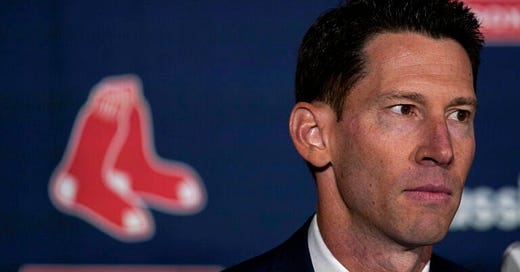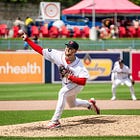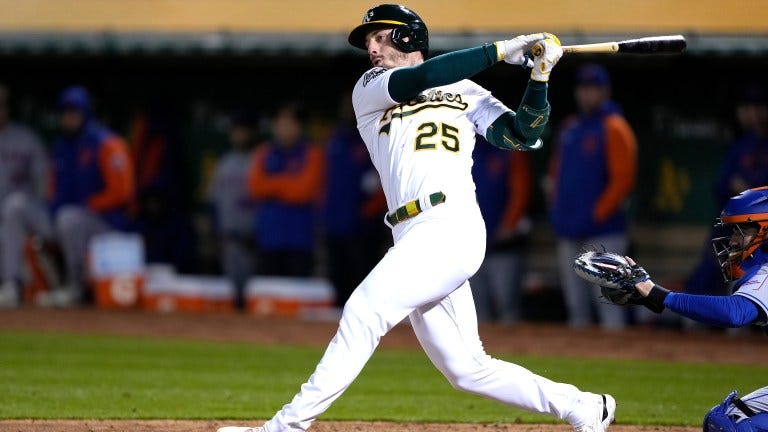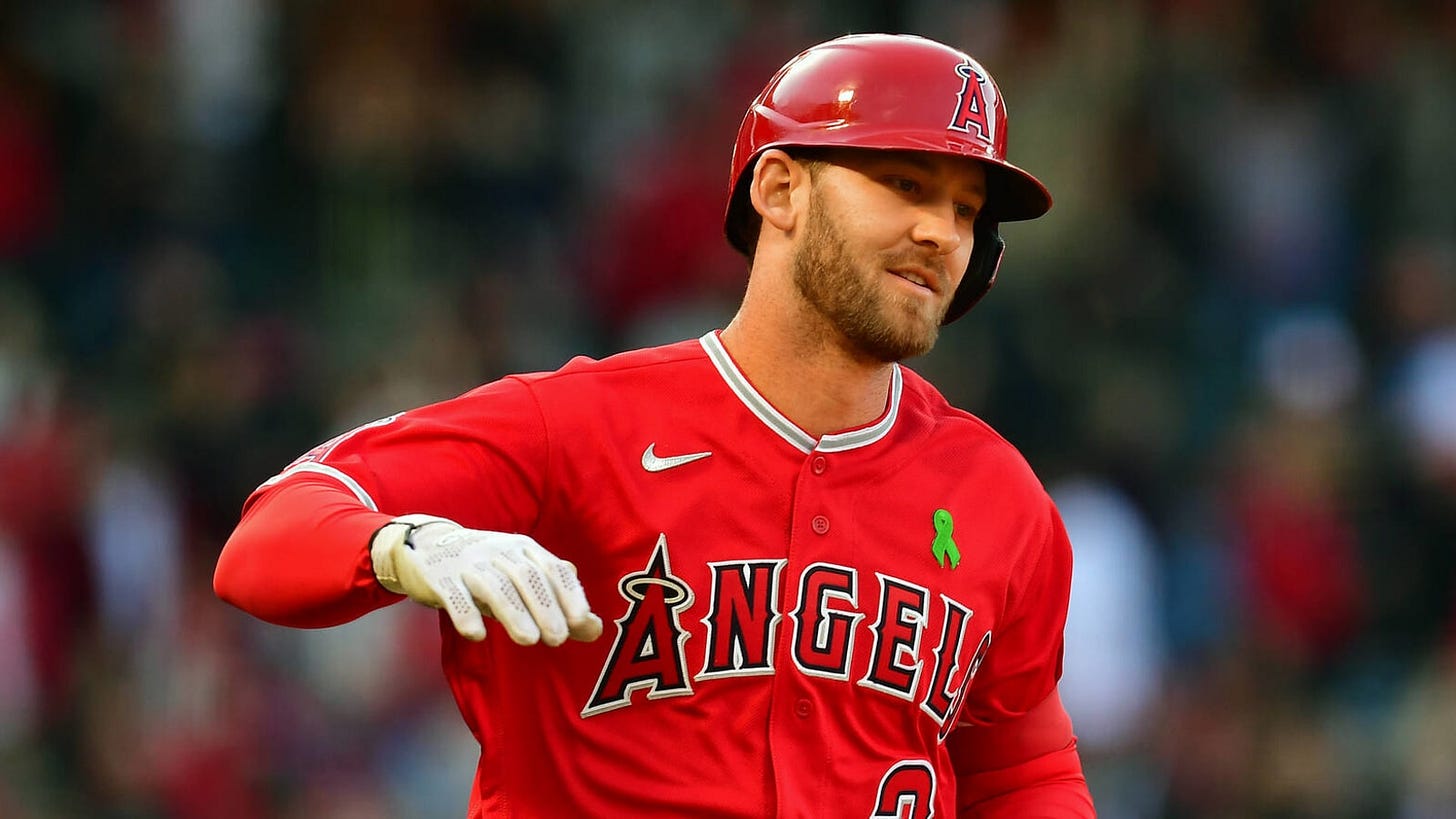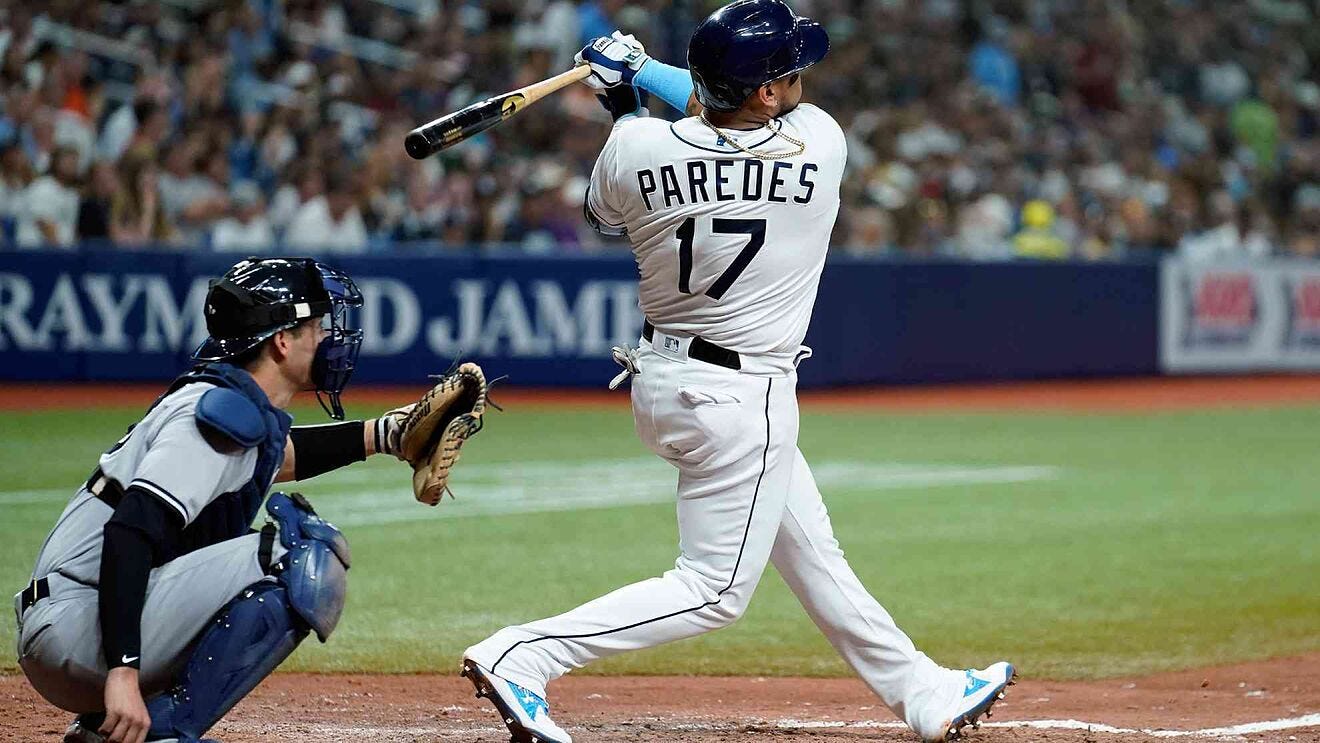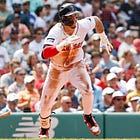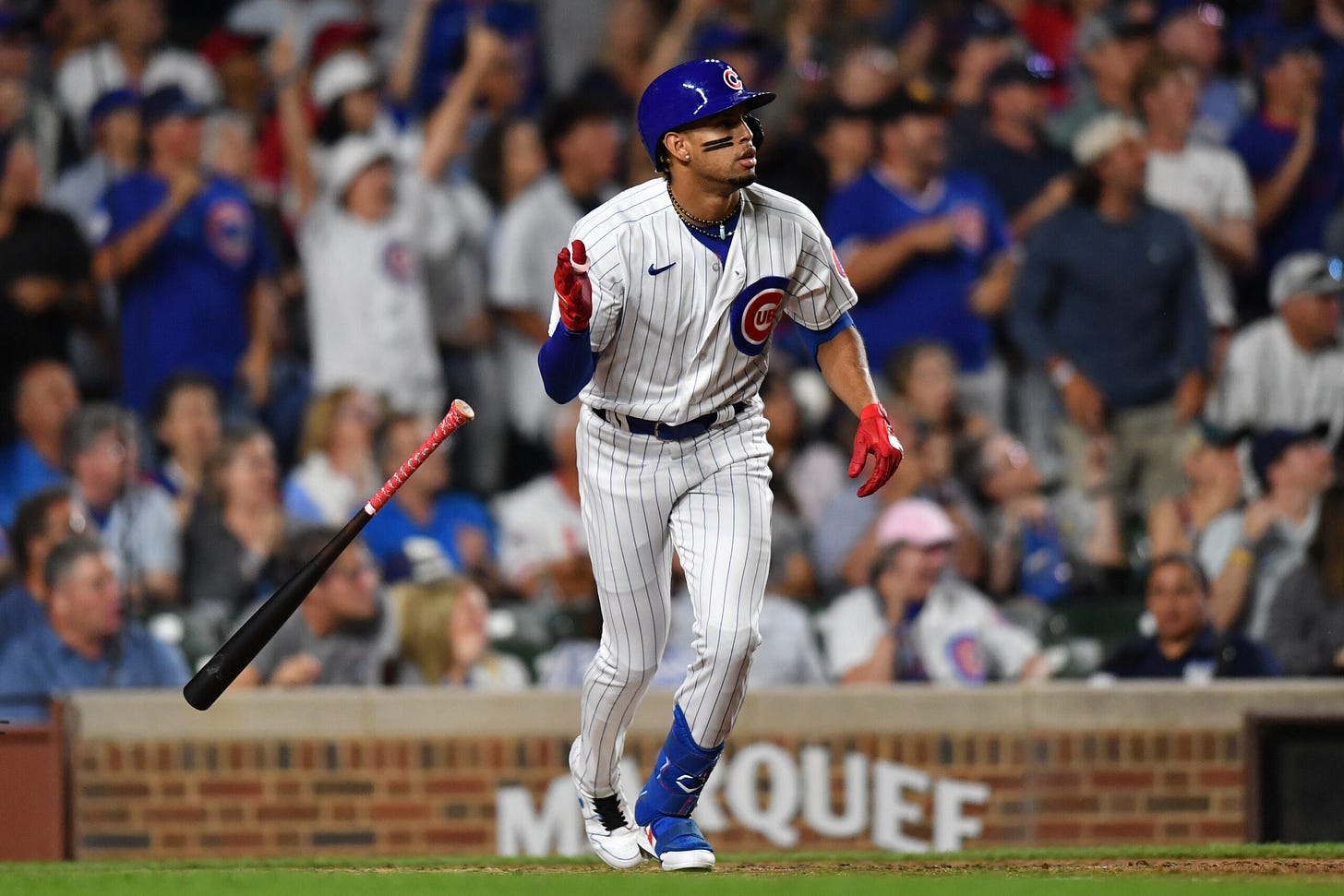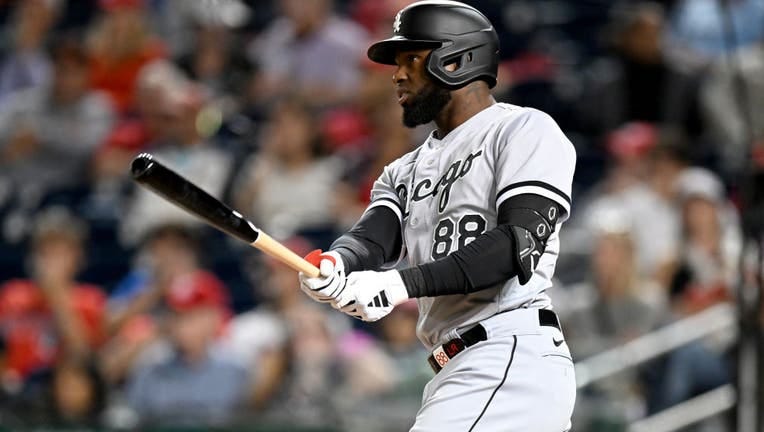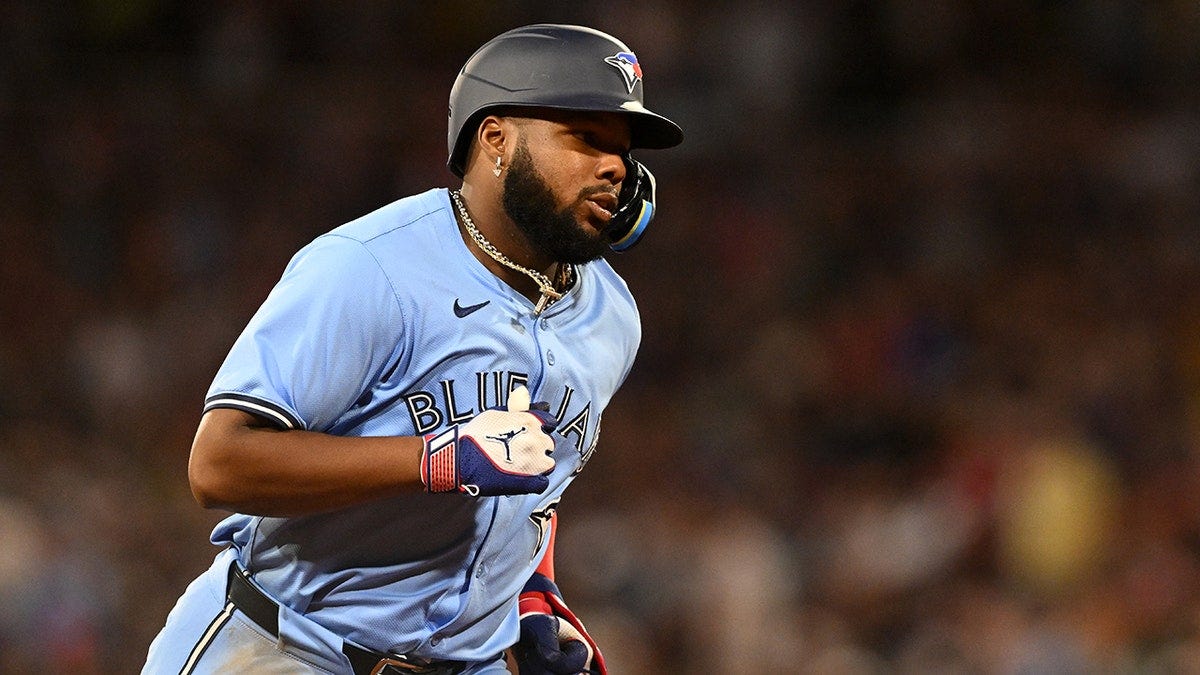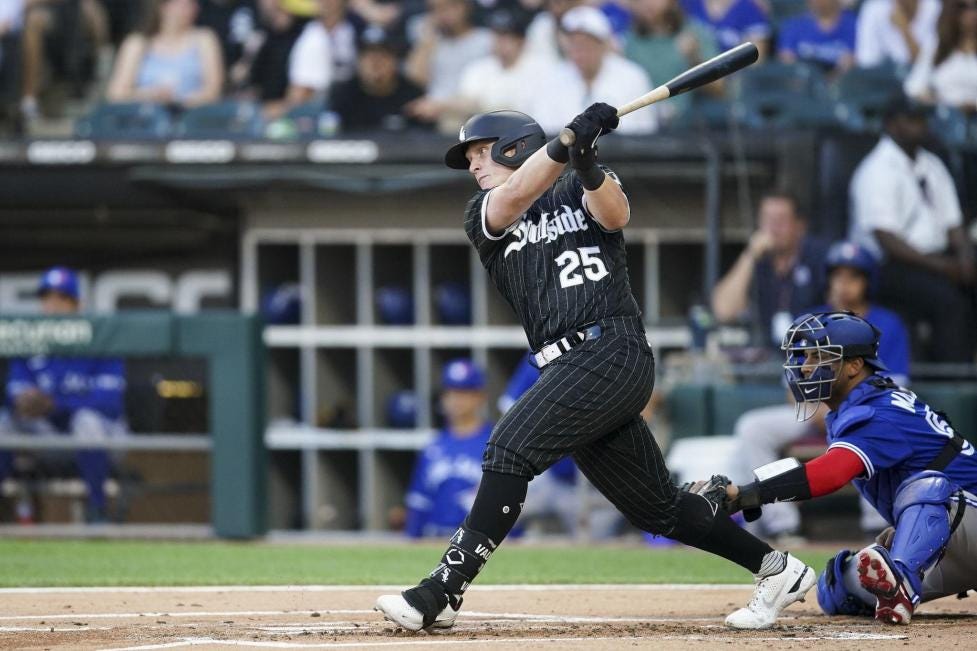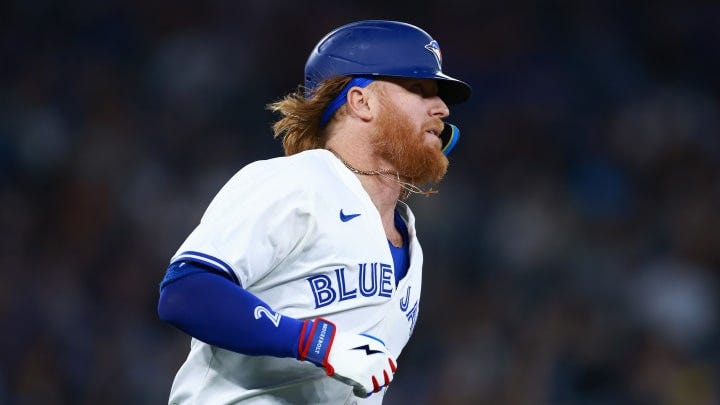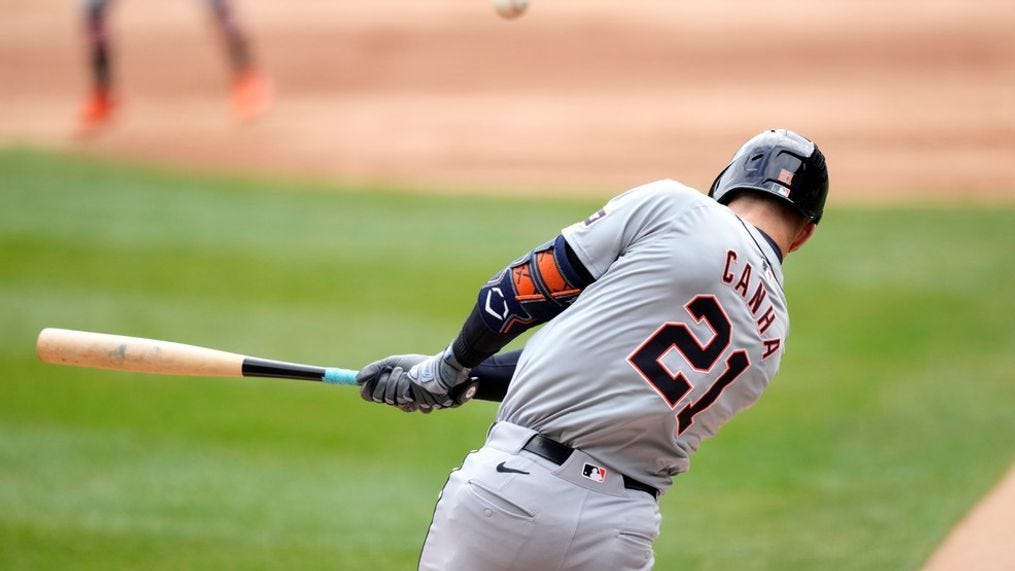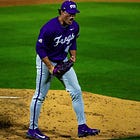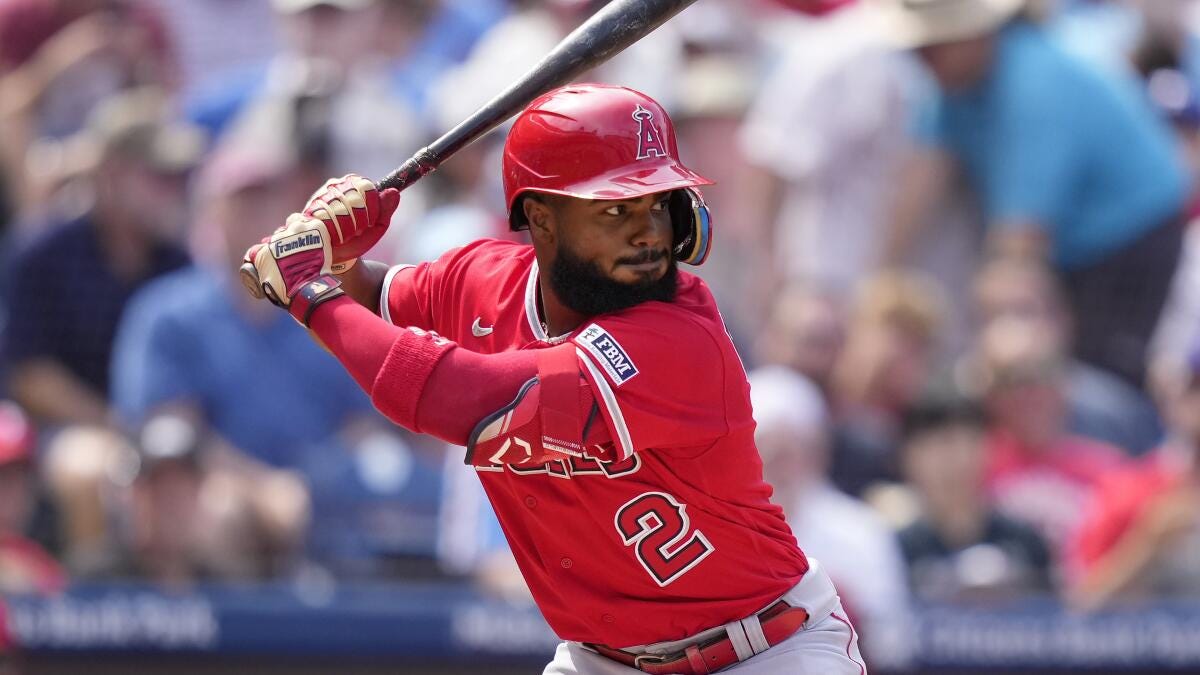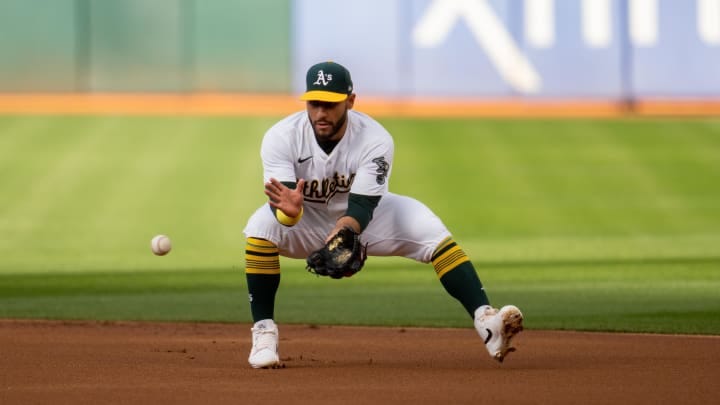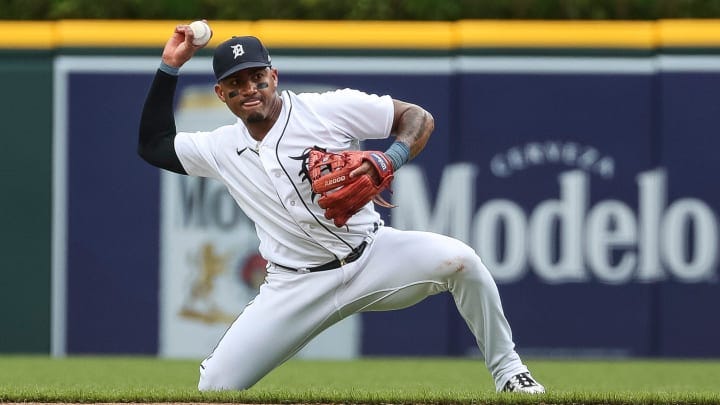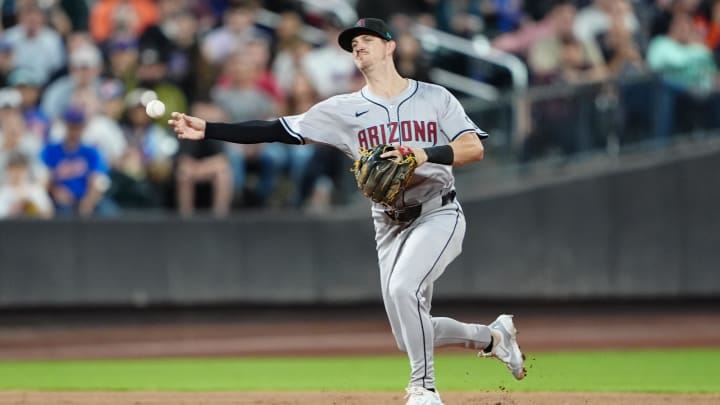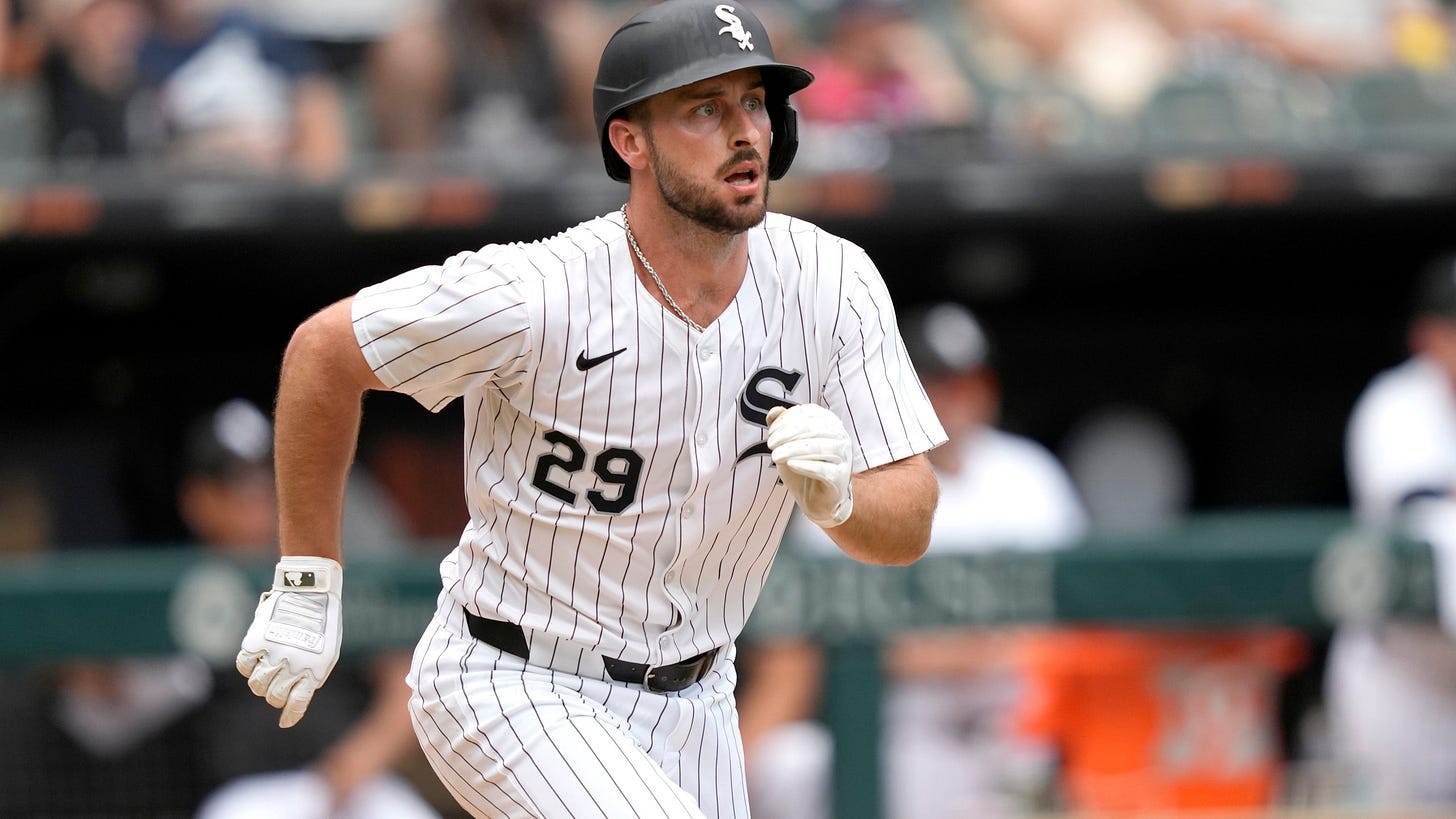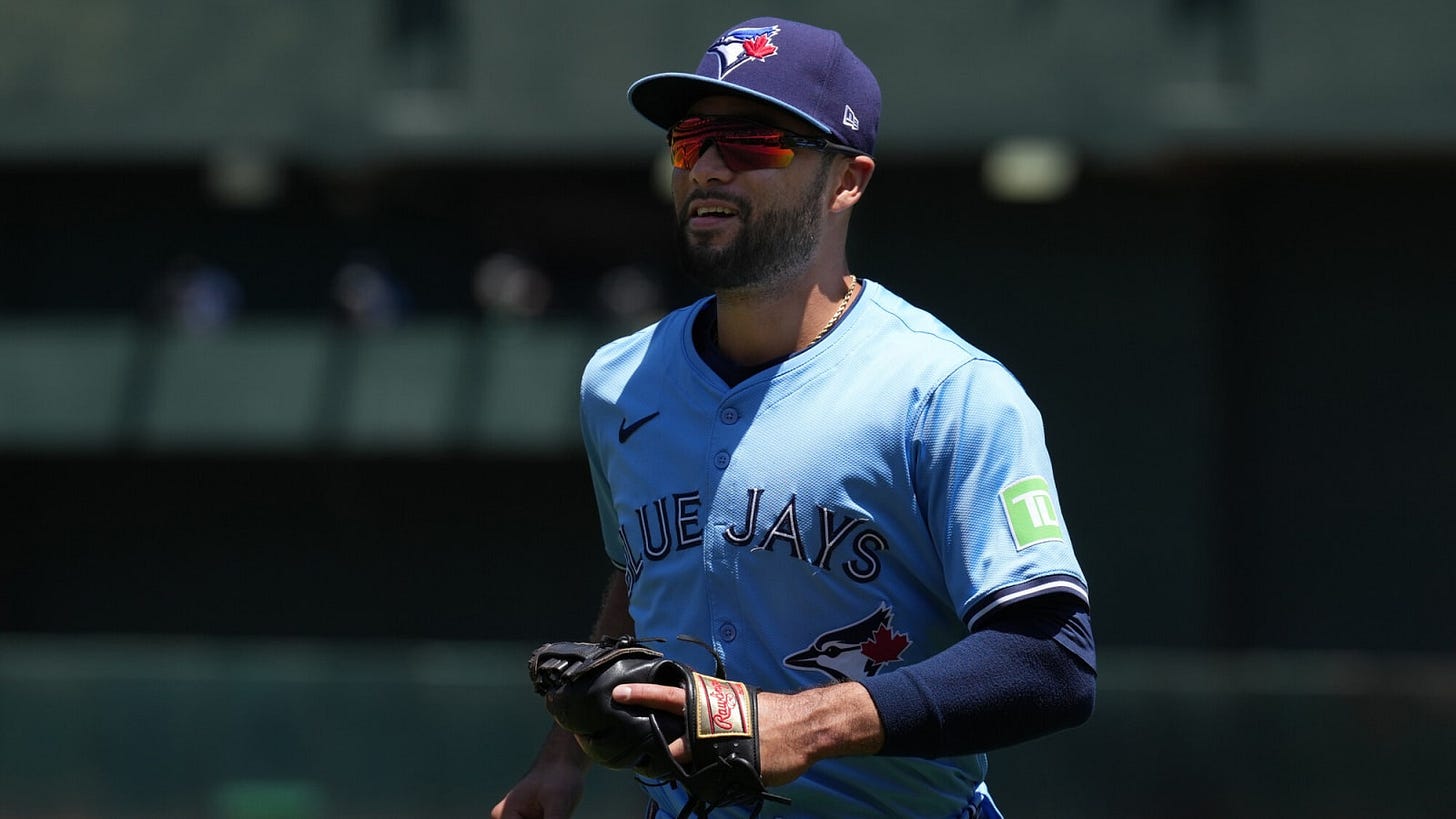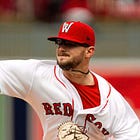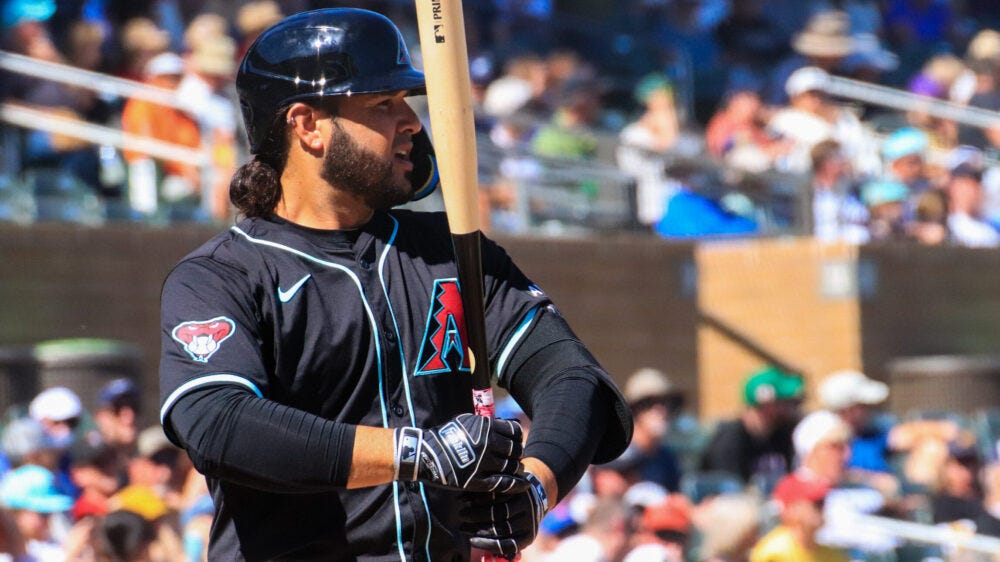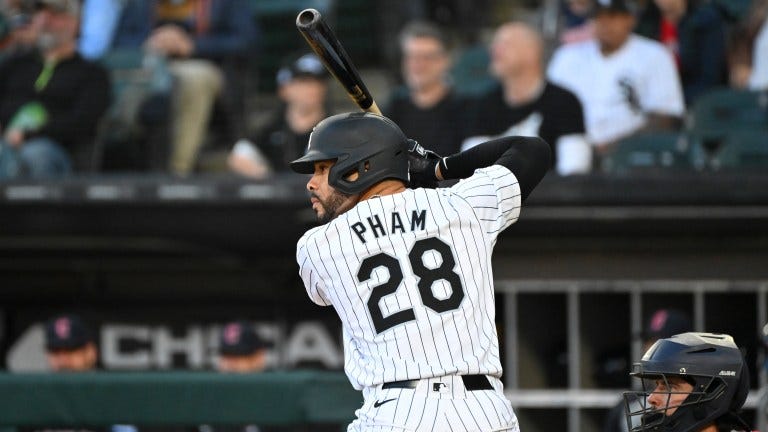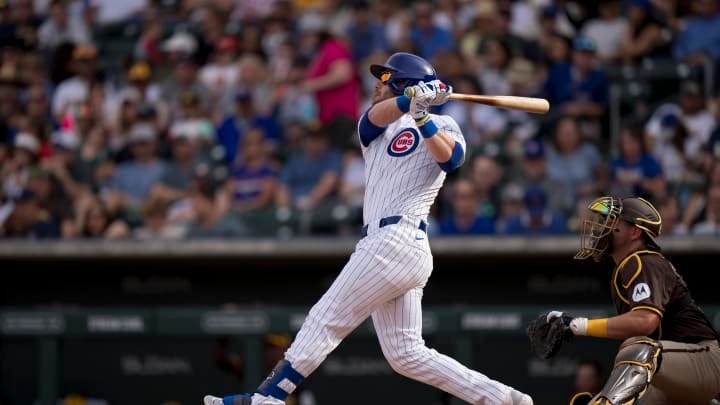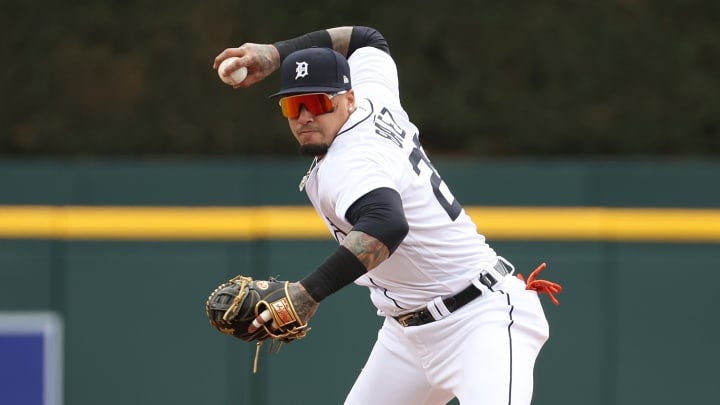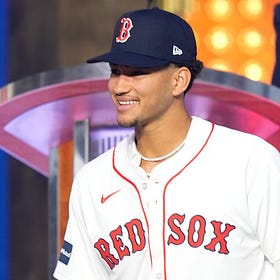Red Sox Trade Candidates: Right-Handed Bats
The trade deadline is looming and the Red Sox have reportedly been in the market for a right-handed bat to add to their lefty-dominant lineup. Hitting vs left-handed pitching has been a weakness for the Red Sox all season, so improvement in this area could go a long way toward bolstering their playoff chances. The deep Red Sox farm system should allow the team to be active in the deadline sweepstakes for most any player, but the way the current roster is constructed, it’s difficult to tell exactly where that right-handed bat could fit in.
The most likely spot is in a DH platoon with Masataka Yoshida, but there are some other paths a modest addition could have for playing time depending on their positional abilities. A more significant acquisition could require a restructuring of other parts of the roster for either the short or long term. Below is an exhaustive list of trade candidates, with players that could be worth a significant shakeup first, followed by some more modest fits in different potentially available roles.
Significant Long-Term Additions
This is the group of players that will require the most significant investment and will fundamentally change the makeup of the team, both because they should be in the lineup every night, and because they have several years of team control remaining. With Yoshida having a resurgent couple of weeks at the plate, I don’t necessarily predict deals for any of these players will happen, but they are still worthy of discussion.
Brent Rooker
Brent Rooker was one of the breakout stars of 2023, and he has only seemingly gotten better at the halfway point of 2024. He is hitting to the tune of a 166 wRC+ in the first half with a .291/.369/.573 slash line 21 HR and 18 2B. His all-or-nothing approach leads to plenty of strikeouts, but his 10.5% walk rate mitigates some of those concerns. His impressive pull power would play excellently at Fenway Park, but his subpar outfield defense means he’d likely slot in as the everyday DH, displacing Yoshida.
As a 29-year-old late bloomer who didn’t play a full major league season until last year, he still hasn’t reached arbitration. This is perhaps the most attractive part of Rooker and why dealing for him should at least be considered. The Red Sox would essentially be adding their next JD Martinez, but without the exorbitant contract, giving them increased flexibility if his now season-and-a-half run of excellence turns out to be a fluke. With the Yoshida situation showing improvement over the last few weeks, a trade for Rooker probably does not happen this deadline, but Yoshida’s long-term fit with the team is still murky, so I wouldn’t necessarily scoff at the idea either.
Taylor Ward
Taylor Ward is essentially Rooker lite. He was the breakout star of 2022 when he hit 23 home runs in 135 games in his first full big-league season as a 28-year-old. He put up a .281/.360/.473 slash line and a 137 wRC+ in that season. Unlike Rooker, he cooled off in his follow-up season last year, with a .253/.335/.421 slash line and a 107 wRC+ in 97 games. His season was cut short in late July when he was hit in the face by an Alek Manoah fastball and suffered multiple facial fractures. He’s back this year and posting similar numbers, with a .230/.314/.404 slash line and 102 wRC+.
Ward is one of the lesser talents among this first group, but I included him here because he has two seasons of arbitration left beyond this one. His overall numbers from ‘23 and ‘24 aren’t inspiring, but they’ve come with a 140 and 167 wRC+ vs LHP, respectively, a quality that would surely be attractive to the Red Sox. He also has a stronger defensive track record than Rooker in the outfield, so he could be in play as a replacement for Tyler O’Neill in left field beyond this season. Still, I wonder if the role available for Ward in the short term is too small to justify the acquisition cost. He would be limited to the short side of the DH platoon and occasionally spelling the injury-plagued O’Neill in left field. He’s probably just a hair too good a player for that.
Ward would be an interesting candidate for a buy-sell strategy in which the Red Sox would acquire Ward and move O’Neill — who is a free agent after this season — in a separate deal, but Craig Breslow’s comments about picking a lane make this strategy seem unlikely. The Angels did play Ward at first base for three innings this season, so perhaps he could attempt to learn the position in Boston? I wouldn’t count on it, but it would offer Ward more opportunity if he could be viable there. I’m intrigued by Ward as a candidate but torn on whether he’s ultimately worthwhile to pursue. It’s entirely possible the Red Sox would just prefer to move forward with Rob Refsnyder in O’Neill’s role next season or attempt to bring O’Neill back. If either of those is true, they will probably pass on Ward.
Randy Arozarena, Yandy Diaz, Isaac Paredes
This trio of Rays players come with various levels of team control and positional fits. Arozarena is an outfielder with two seasons of control via arbitration after this one. Diaz is a first baseman with some experience at third base who signed an extension in Tampa Bay guaranteeing two seasons after this one and carrying a club option for a third. Paredes has experience at each of the infield positions and has three arbitration years remaining after this one. Each of these players boast impressive career numbers vs LHP in particular, but each of them is also an everyday player. The crowded Red Sox outfield mix makes Arozarena’s fit particularly questionable. He’s not as strong a defender as Ward, making DH his likely landing spot if a deal were to take place. Diaz is in the same boat with franchise cornerstones taking up each of the infield corners in Boston.
Paredes is the one player of the bunch that the Red Sox could conceivably offer the most playing time thanks to his versatility. He could play the short side of a DH platoon with Yoshida as a primary role, and fill in for each of the Red Sox infielders as needed against RHP (though his experience at shortstop is very limited). I still question whether this would be enough playing time to justify the acquisition cost it would take to pry Paredes out of Tampa Bay, particularly since they would be moving him within the division, but it is the best chance the Red Sox have of maximizing one of this trio. Paredes’s fit in Boston is particularly tantalizing, given that he is the league’s preeminent expert at hitting pulled fly balls. If you’ve never looked into Paredes’s profile, please take the time to do so, as it is a true statistical anomaly. His superpower would be amplified to the maximum degree if he were given the opportunity to aim at the Green Monster for 81 games a year.
Christopher Morel
Christopher Morel is a bit of an oddity. There are two things objectively true about him. One, is that he hits the ever living **** out of the ball. The other, is that he simply cannot play the field. Since Morel made his debut in 2022, the Cubs have tried him nearly everywhere. This season, they resigned to having him play third base, thinking that keeping him to just one spot would allow him to focus on refining his craft there. That strategy has not worked so far, as he’s posted -11 OAA in just the first half of the year. At the plate, Morel has been one of the unluckiest players in baseball, with all of his expected stats vastly outperforming his actual output. His offensive output will almost definitely start to catch up in the second half, but as for his poor fielding, that’s here to stay.
With the Cubs having difficulty figuring out exactly how Morel fits into their plans, and the results being what they are, this could be an intriguing buy-low opportunity for a 25-year-old pre-arbitration player who can undeniably rake. He’s been a popular subject of discussion among Red Sox fans for this reason, but I would caution against the notion that Morel could slot in anywhere but DH. We’ve seen defensive turnarounds before — Jarren Duran being the best current example — but there’s not much to point to that suggests one is forthcoming for Morel. The acquisition cost will still be high despite labeling this as a “buy low”, and fitting him into the lineup would again require relegating another regular to the bench, namely Yoshida.
Luis Robert Jr.
As one of the lone players on this deadline’s trade market with true superstar potential, Luis Robert Jr. would be the most expensive acquisition of a RHH the Red Sox could make. He is a truly special player with the ability to be a franchise cornerstone if he can stay healthy. That is the big question mark, however, as since his debut in 2020 Robert has played 100 games or more in a season just once. He signed a six-year, $50 million contract extension with the White Sox in 2020 that carries two additional $20 million club options for the 2026 and 2027 seasons. That means he’s locked in affordably through his age-29 season with enough talent to make him one of the league’s top players in each of those years.
What makes Robert particularly attractive is that he is a very strong defender in center field. The Red Sox, of course, have their own defensive wizard locked up to play center field for the foreseeable future in Ceddanne Rafaela, but Robert’s defensive prowess would translate in Fenway’s spacious right field as well. Given the talented group of young outfielders the Red Sox have amassed and the exorbitant price the White Sox will be looking for, a deal for Robert would shake up the foundation of the franchise a considerable amount. It is a highly unlikely undertaking, but considering the talent and the fit as a right-handed bat with defensive utility, it’s a move that’s worth the debate.
First Base/DH
This next group of players fit the bill as right-handed DHs but also have the ability to play first base for some additional playing time.
Christian Walker, Pete Alonso, and Vladimir Guerrero Jr.
I struggled with whether to include these three names at all; the first two because of their teams’ position in Wild Card race, and the third because of how crazy it would be for Toronto to trade their star player within the division. I won’t dive deeply into any of them here, but they are looming as some of the top right-handed bats that could be made available this deadline. I will note that similar to the names above, each of these players is too good to sit and would displace Yoshida from his role as primary DH. Alonso and Walker are both straight rentals, though, and thus don’t fit in the “Significant Long-Term Additions” category. Guerrero does have one additional year of control, but a trade within the division is so unlikely that it didn’t feel right to include him in that group either.
Andrew Vaughn
Vaughn is an especially interesting trade candidate for the Red Sox among the “First Base/DH” group given that he has two additional years of arbitration control after this one, but carries a career fWAR of -0.6. You’re probably asking yourself why that would make him attractive. The reason is that Vaughn doesn’t do enough to warrant everyday playing time, but he does do exactly what the Red Sox are looking for, which is hit LHP. He has a career 115 wRC+ vs lefties and is carrying a 120 wRC+ vs southpaws this season. If the Red Sox are committed to a DH platoon with Yoshida, Vaughn is an option that could fit into that role seamlessly for multiple years. He could also be the backup first baseman and an emergency left fielder, with 139 games of MLB experience there and an additional 63 games of experience in right field. The cost of acquisition for Vaughn should be very reasonable but maybe a hair more than the cost of acquisition for the two others in this category thanks to his additional team control.
Justin Turner
Old friend Justin Turner was one of the lone bright spots of the 2023 Red Sox season, putting up an impressive 114 wRC+ at 38 years old. His age-39 season hasn’t quite been the same, as he’s only been able to muster a 99 wRC+ for the Blue Jays so far in 2024. Time is undefeated, unfortunately, and it may be getting close to the point where Turner could hang it up. The bright side, however, is that he’s put up a 130 wRC+ vs LHP this season, so he could still fit nicely in the role the Red Sox would have to offer him in what may be his swan-song. He did have an impressive June at the plate, so that could be a sign there’s still something left in the tank, and providing Toronto financial relief from the remainder of Turner’s one-year $13 million contract should keep his acquisition price low. I’m usually reluctant to bring up intangible value, but we did also see first-hand what Turner brings to the table in that regard last year. With Alex Cora’s fondness for JT, I wouldn’t dismiss the possibility of a reunion.
Mark Canha
Canha profiles similarly to the Blue Jays’ Turner in many different ways. He’s in the last year of his contract worth about $11 million for 2024, has great plate discipline, is having a down year at the plate overall with a 96 wRC+, but is continuing to hit LHP at a high clip with a 145 wRC+ in that arena. Canha has the added benefit of being a superior defender to Turner at first base and has continued to spend some time in both outfield corners this season. Like Turner, his lone season with his new team has not gone according to plan, and the acquisition price should be similarly low. At a spry 35 relative to Turner’s 39, there could be a reasonable expectation that he has a little more left in the tank for the stretch run, although recently he has been dealing with some discomfort in his left hip.
Utility/No Shortstop
This is a group of players that can play in multiple spots across the infield but either do not have experience playing shortstop or have poor defensive metrics in their time there.
Luis Rengifo
The switch-hitting 27-year-old Rengifo is in the midst of a career season. He’s posted a 126 wRC+ so far, and his .315 batting average would be third among qualified players in the American League if he wasn’t just short of qualification. He’s also added 22 steals on the season, which is 16 more than his previous career high. The way he’s achieved these results, however, has been peculiar. He’s walking significantly less, and hitting significantly more ground balls relative to last season. His .349 BABIP suggests his increased production at the plate may be unsustainable, and despite the stolen bases, his sprint speed is just 39th percentile. The stolen base numbers imply that he’s a smart and savvy baserunner, but it doesn’t support the notion that he’ll consistently maintain a high BABIP. He’s logged time at every infield position besides first base and at both corner outfield spots in his career, but his numbers aren’t great at any one position and are especially poor at shortstop, suggesting he shouldn’t be considered an option there. The pros are that he hits LHP well, doesn’t strike out much, can spell players at multiple positions, and has an additional year of team control after this one. The big con, however, is that this is an obvious buy-high situation, with the Angels making him available a year early because he has outplayed expectations in the first half of the season.
Abraham Toro
A similar switch-hitting alternative to Rengifo is Abraham Toro of the Oakland Athletics. Toro is also enjoying a career year in his age-27 season, albeit with less flashy results than Rengifo. His 99 wRC+ implies he’s just about league average, but that number jumps to 122 vs LHP. Like Rengifo, he has defensive versatility, appearing at third base, second base, first base, and left field this season, while also logging 11 games as a DH. His defensive metrics suggest he’s a better defender than Rengifo, particularly at third base where Toro has accumulated 2 OAA. There’s some comfort relative to Rengifo in Toro’s .303 BABIP, suggesting he’s right where he’s supposed to be in terms of his expected offensive output. His additional year of team control is also a point in his favor. Besides the stolen bases, however, Rengifo has also hit RHP better than Toro this year, making him the more viable option in non-lefty situations.
Andy Ibáñez
Andy Ibáñez is as unique a player as you’ll find in Major League Baseball. He has truly operated as a specialist at hitting lefties this season, with a 192 wRC+ vs LHP and a 4 wRC+ vs RHP. There is naturally some concern about a player operating on those kinds of extremes, but he does have a 78 wRC+ in his career vs RHP, so this season’s complete lack of performance could be a fluke. Still, his playing time should be limited to southpaw matchups to the greatest degree possible. That doesn’t mean he can’t impact a game with a righty starting pitcher, however. Ibáñez is adept at pinch-hitting late in games, and he is a strong defender at multiple positions, particularly second base where he has 3 OAA this season. He’s a bench weapon that you can trust a savvy manager like Alex Cora to get the most out of despite his limitations.
Utility/Shortstop
This group consists of players whose primary position is shortstop or who have strong histories at the position. This is the position that should offer the most opportunities for playing time on the Red Sox outside of DH and first base, and it is the spot where a strong defender can make the most impact.
Bo Bichette
Similar to Guerrero Jr. above, I won’t get into the case for Bichette too deeply because I see it as extremely unlikely he’ll be traded to a division rival. He’s having the worst season of his career, with just a 69 wRC+ and 0.2 fWAR on the year. He’s never been a great defender at shortstop, but he’s handling the position respectably of late. His performance vs LHP has been abysmal this season, however, so acquiring him at a premium for his name value and hoping for a late-season resurgence is probably not the route to go.
Kevin Newman
Newman is a particular favorite trade candidate of mine as the best potentially available combination of shortstop defense and offensive production vs LHP. He has accumulated 3 OAA at shortstop this season, placing him in a tie with Orlando Arcia for 14th in Major League Baseball. Nick Ahmed is the only available player who has accumulated more OAA at shortstop than Newman this season with 4, but carries a 68 wRC+ on the season, leading to his release from the Giants earlier this week. Newman has posted a 91 wRC+ on the year, a number that improves to 96 vs LHP. He also has strong defensive seasons at second and third base in his past, pointing to his versatility. His potential availability is complicated. Arizona is firmly in the Wild Card race in the National League which suggests they may not be willing to sell. They did, however, just get shortstop Geraldo Perdomo back from injury, and are set to get another shortstop back soon in Jordan Lawlar. With Ketel Marte entrenched at second base, this makes for a crowded middle infield mix. There is some speculation that Lawlar could take over for the struggling Eugenio Suarez at third upon his return, though, which would preserve Newman’s role as the primary infield option off the bench for Arizona.
Paul DeJong
DeJong’s 2024 is his best offensive season in a few years, but his worst defensive season in a few years as well. His wRC+ has improved from 66 in 2023 to 93 so far this year, and his 16 home runs have already eclipsed his 2023 total of 14. His 9 OAA at shortstop in 2023 was good for 7th in Major League Baseball, but he has followed that up with -2 OAA to this point in 2024. It’s hard to believe someone with as strong a defensive track record as DeJong has just lost it in one year’s time, but the numbers are what they are. I’d take the bet that DeJong would be an improvement defensively for the Red Sox, but it should be noted that DeJong is a reverse split player, meaning he hits better vs RHP than vs LHP despite hitting right-handed. This has been true his whole career and has continued so far in 2024, despite the overall improvement at the plate.
Isiah Kiner-Falefa
Former Yankee Isiah Kiner-Falefa is also in the midst of a resurgent season at the plate for his new team, posting a career-high 117 wRC+ so far in his first year in Toronto. He’s been quite balanced against right and left, with a 115 wRC+ vs LHP and a 117 wRC+ vs RHP. He’s been a strong defender at multiple positions his whole career, especially at third base where he won a gold glove in the shortened 2020 season as a member of the Texas Rangers.
Shortstop hasn’t always been his best spot, but he does have over 2500 innings of MLB experience at the position. In 105 innings at shortstop this year he’s posted 0 OAA, which sounds bad until you realize David Hamilton has -3 OAA and Rafaela has -8 OAA at shortstop this season, respectively. IKF has also accumulated 2 OAA each at second and third base this season, meaning his positional versatility is real and he could find himself with ample playing time should he join the Red Sox. He is under contract for one additional season after this one for $7.5 million.
Other Candidates
This final category consists of three players that don’t fit neatly into any of the above categories but are likely to be moved. The last player is included for a little bit of fun. Please don’t yell at me.
Eugenio Suarez
Suarez was the primary addition to the Diamondbacks offense this past offseason, with the expectation he’d add some much-needed thump to the lineup. It has not played out that way so far. He’s recorded just a .216/.302/.366 slash line with a 90 wRC+ in the first half, and his struggles have led to rumblings that Jordan Lawlar could displace him at third base upon Lawlar’s return from injury. Suarez’s career has been marked by a series of offensive ups and downs. He’s bounced back strong after poor seasons before, but his $11 million salary means it may be difficult for the Diamondbacks to wait around, particularly if he loses his starting job.
The Red Sox could save the Diamondbacks from this contract with very minimal prospect capital. He’s a strong defender at third base and could very well make the transition across the diamond to first. He has a $15 million club option for next season, meaning that the Red Sox could bring him back in 2025 if they can help Suarez turn things around. It’s likely, however, that if the Red Sox did have any interest in Suarez beyond this season, they would simply wait until his option is inevitably not picked up by Arizona and pursue him for cheaper in free agency. That said, he is a right-handed hitting trade candidate with success vs LHP in his past, so I included him on the list.
Tommy Pham
Tommy Pham is currently on his fifth team in three seasons, and he’ll likely be moved to a sixth at the coming deadline. Pham has made a long career out of hitting lefties, with a 130 career wRC+ vs LHP. The 36-year-old seemingly hasn’t missed a beat in that regard, with a 145 wRC+ in 60 PA vs LHP this season. He’s well respected across the league for his intensity and has familiarity with Cora after his brief post-deadline run with the Red Sox in 2022. He doesn’t have much left to give in the outfield and has no experience at all in the infield, so it would be a straight-up platoon DH role for Pham if he were brought back for a second stint in Boston.
Patrick Wisdom
Patrick Wisdom is having a hard time finding playing time for the Cubs this season, and the Cubs should have no problems moving him for a very reasonable price. He has experience playing first base, third base, and both outfield corners, a career 118 wRC+ vs LHP, and a 105 wRC+ vs LHP this season. He’s a potential DFA candidate, so this would amount to scraping the bottom of the barrel for a right-handed bat, but he’s one of those players who won’t be asking for any more playing time than the Red Sox are willing to give. That could be worth a flier at next to no cost.
Javier Baez
This article has been long, so if you’re still reading, I thank you for sticking with me. As a reward, I’ve decided to include my craziest Red Sox trade idea here at the end, and attempt to convince you that it’s not so crazy after all. I have a feeling my attempts will be in vain, but here it goes anyway.
Javier Baez is one of baseball’s greatest albatross contracts going right now. After signing a six-year $140 million contract with the Tigers in 2022, he’s produced next to nothing at the halfway mark three years in. He has three years and $73 million remaining, at a luxury tax AAV of about $23 million. Enter Yoshida, who we’ve mentioned previously has a questionable long-term fit on the Red Sox with the glut of outfield talent and left-handed hitting on both the major league roster and in the minor league system.
Yoshida also has three years remaining on his deal after this one, with an $18 million AAV. There are not likely to be many teams lining up to take on Yoshida’s contract, even with his improved production over the last month. There aren’t many teams lining up to save Detroit from their big financial commitment either.
By swapping Yoshida for Baez, the Red Sox would save the Tigers $15 million of luxury tax commitments over the remaining three years ($17.2 million in real dollars), AND give the Tigers the more viable major league player over that span. Each of those numbers — the luxury tax commitment and the real dollar value — goes up a bit if the deal is done at this season’s deadline. For that favor, the Tigers would have to add prospect value to their end of the deal.
If the deal is done at the deadline, the Red Sox could choose to keep Baez around until the end of the season to log some defensive innings at shortstop, the one aspect of his game where he’s still capable. If not, they could DFA him, something the Red Sox can do with their finances but the Tigers may find less palatable in their financial situation.
The Red Sox would gain roster flexibility and prospect capital at the cost of just $15-$17 million more than they already have committed over the next three years. The Tigers would get cost savings and a legitimate big-league hitter that would serve as a better allocation of their limited dollars. A deal like this would serve as the key that unlocks roles for some of the more ambitious trade targets at the top of this list.
It's crazy, I know. So crazy, in fact, that it just might work.
Thanks for reading and be sure to follow and subscribe!
Red Sox 'getting a winner' in prospect Braden Montgomery
The Red Sox farm system is already loaded with high-end positional player talent, and the organization added another big piece on Sunday night. Boston selected switch-hitting outfielder Braden Montgomery with the 12th pick in the 2024 MLB Draft. Montgomery, who attended Texas A&M, is rehabbing a broken right ankle he sustained …


